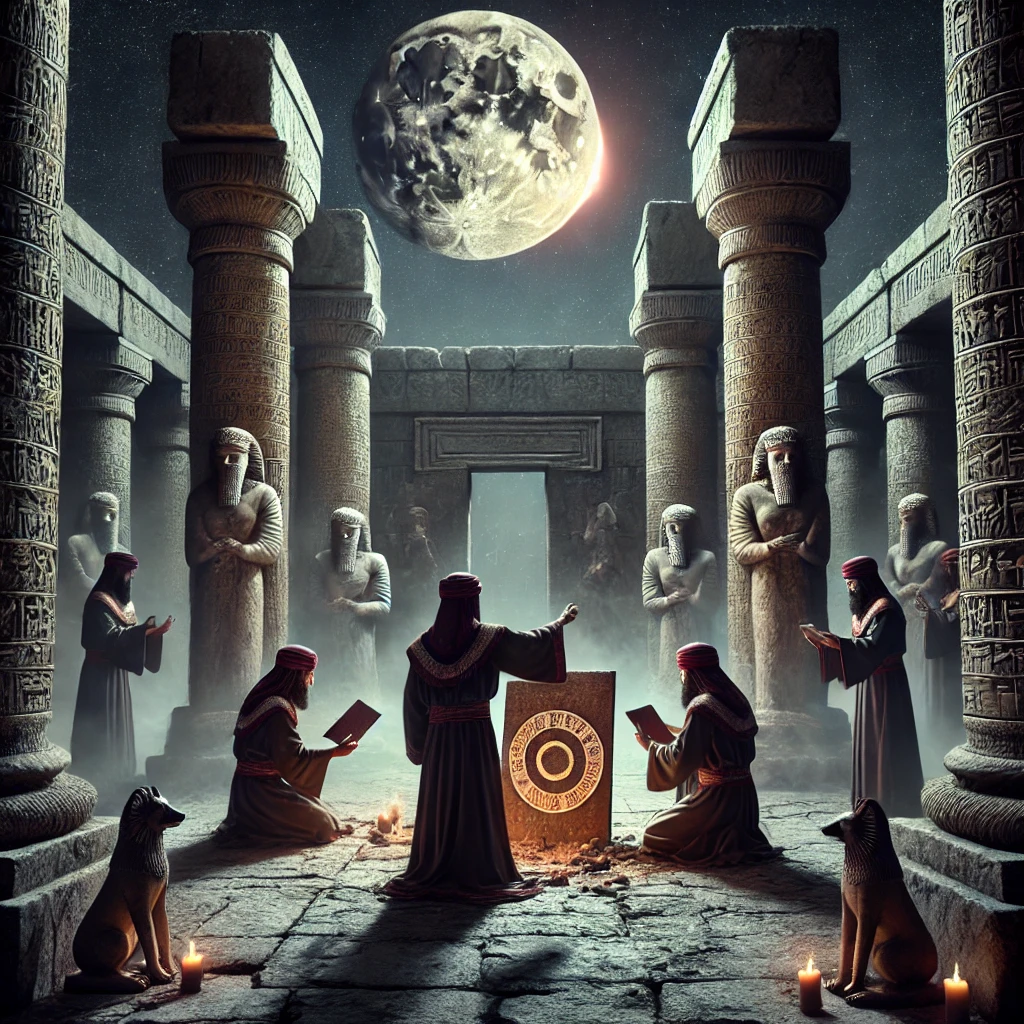In the ancient lands of Mesopotamia, where the Tigris and Euphrates rivers carved life into the soil, the Assyrians held profound beliefs in unseen forces that shaped their fate. Among these was the enigmatic practice of “curseology,” a mysterious art believed to wield power over life, death, and the unknown realms beyond human perception.
In the heart of Assyria, within the temple city of Ashur, there existed a group of priests known as the Mulukê, masters of curses. These men were not only trained in the conventional practices of blessing and prayer but were entrusted with arcane knowledge—the ability to summon protective or punitive curses. In the Assyrian worldview, the gods and demons were intertwined with every aspect of daily life, and curses were a tool for both revenge and justice, carefully wielded under the guidance of these priests.
One tale that has endured is that of Prince Sharru-ukin, a ruler who sought to reclaim his throne after being betrayed by his own kin. Sharru-ukin’s rivals, fearing his return, sought the counsel of the Mulukê and commissioned them to place a curse upon him. The curse was known as Elû-Sîn, “the rising darkness,” which was believed to surround its victim in a shroud of misfortune, illness, and eventual madness.
The ritual was conducted on the night of a lunar eclipse, as darkness overtook the moon—a sign of divine unrest. The priests inscribed Sharru-ukin’s name on clay tablets, then shattered them under the gaze of ancient idols representing Nergal, god of the underworld. They intoned incantations so old they echoed in tones nearly forgotten, summoning the curse to take root in the prince’s soul.
As the story goes, Sharru-ukin’s life spiraled into a shadowed fate. He returned to the kingdom, but every step he took was riddled with inexplicable misfortune. His food would sour, his soldiers fell ill, and even the weather turned against him. Yet, he refused to yield, determined to seek out the root of his suffering. He traveled to Ashur and, in secrecy, consulted a renegade priest who had distanced himself from the Mulukê. The priest revealed the nature of the Elû-Sîn curse, suggesting that to break it, Sharru-ukin would need to locate the shattered clay fragments and conduct a reversal ritual.
The prince embarked on a quest, gathering the scattered fragments, hidden throughout the temple grounds under the cover of night. Finally, during the next eclipse, he invoked the gods with offerings of rare spices and sacred incantations, pleading for release from his cursed fate.
It is said that as the eclipse waned, the curse lifted, and Sharru-ukin returned to power with renewed strength. From that day on, the Assyrians regarded curses with even greater reverence and fear, believing that their fate lay in the hands of gods and spirits who observed every action, with the Mulukê serving as intermediaries between mortals and the mysterious forces that bound them all.
Thus, in ancient Assyria, curseology was more than an art; it was a tool for justice, vengeance, and an instrument of destiny, wielded by those who dared to delve into the darkness where gods and curses dwelled.
